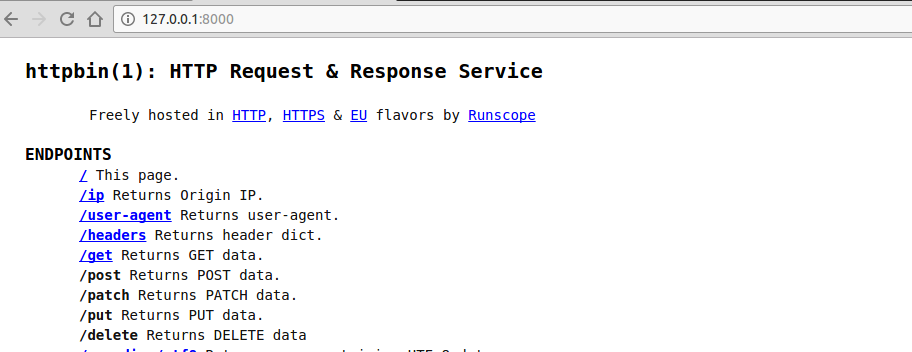Install Requests module
Requests module is officially installed in two ways:
pip Installation
pip install requests
Source mode installation
git clone git://github.com/kennethreitz/requests.git cd requests python setup.py install
Verify that the installation was successful
As explained by python, try importing the module. If the import succeeds, the installation succeeds. Otherwise, you need to check the execution error there.
What I don't know in the process of learning can be added to me? python learning communication deduction qun, 784758214 There are good learning video tutorials, development tools and e-books in the group. Share with you the current talent needs of python enterprises and how to learn python from zero foundation, and what to learn C:\Users\anshengme> python Python 3.5.1 (v3.5.1:37a07cee5969, Dec 6 2016, 01:54:25) [MSC v.1900 64 bit (AMD64)] on win32 Type "help", "copyright", "credits" or "license" for more information. >>> import requests
Environmental preparation
Install gunicorn and httpbin
sudo pip3 install gunicorn httpbin
Start a gunicornServer
⇒ sudo gunicorn httpbin:app [2016-10-27 11:45:08 +0800] [12175] [INFO] Starting gunicorn 19.6.0 [2016-10-27 11:45:08 +0800] [12175] [INFO] Listening at: https://blog.ansheng.me:8000 (12175) [2016-10-27 11:45:08 +0800] [12175] [INFO] Using worker: sync [2016-10-27 11:45:08 +0800] [12178] [INFO] Booting worker with pid: 12178
Opening the browser and entering ``` will give you the following page, which is equivalent to starting an http server locally to facilitate learning requests module

A simple request applet
The following small program will request the URI link'https://blog.ansheng.me:8000/ip'to get the corresponding data.
#!/use/bin/env python3
# _*_ coding:utf-8 _*_
import requests
URL_IP = 'https://blog.ansheng.me:8000/ip'
def use_params_requests():
# parameter
params = {'params1': 'Hello', 'params2': 'World'}
# Send requests
response = requests.get(URL_IP, params=params)
print("Response status code:", response.status_code, response.reason)
print("Head returned:", response.headers)
print("Convert the returned data to json:", response.json())
print("The text of the response:", response.text)
if __name__ == '__main__':
use_params_requests()
Send requests
Getting User Information through API s Provided by GITHUB
#!/use/bin/env python3
# _*_ coding:utf-8 _*_
import requests
import json
URL = 'https://api.github.com'
def build_uri(endpoint):
return '/'.join([URL, endpoint])
def better_print(json_str):
return json.dumps(json.loads(json_str), indent=4)
def request_method():
# Get all the information of the user
response = requests.get(build_uri('users/anshengme'))
print(better_print((response.text)))
print("\n")
# Get the user's mailbox
response = requests.get(build_uri('user/emails'), auth=("anshengme.com@gmail.com", "xxxxxx"))
print(better_print((response.text)))
if __name__ == '__main__':
request_method()
Requests with parameters
# Using params to transmit data
def params_request():
response = requests.get(build_uri('users'), params={'since': 11})
print(better_print(response.text))
print(response.request.headers)
print(response.url)
# Using json method
def json_request():
response = requests.get(build_uri('user'), auth=("username", "email"), json={"name": "asdas"})
print(better_print(response.text))
exception handling
def timeout_request():
try:
response = requests.get(build_uri('user/emails'), timeout=10)
response.raise_for_status()
except Exception as e:
print(e)
else:
print(response.text)
print(response.status_code)
Custom request
from requests import Request, Session
def hard_request():
s = Session()
# Create a request
headers = {'User-Agent': 'fake1.3.4'}
req = Request('GET', build_uri('user/emails'), auth=('anshengme.com@gmail.com', 'xxxxxx'), headers=headers)
prepped = req.prepare()
print("Request Head", prepped.headers)
# Send requests
resp = s.send(prepped)
print(resp.status_code)
print(resp.request.headers)
print(resp.text)
Example
Download pictures/files
#!/use/bin/env python3
# _*_ coding:utf-8 _*_
import requests
from contextlib import closing
# The Model of Stream Transport
def download_img():
url = "http://www.sinaimg.cn/IT/cr/2016/0331/725124517.jpg"
# headers = {
# 'User-Agent': 'Mozilla/5.0 (X11; Linux x86_64) AppleWebKit/537.36 (KHTML, like Gecko) Chrome/54.0.2840.71 Safari/537.36'}
# response = requests.get(url, headers=headers, stream=True)
response = requests.get(url, stream=True)
print(response.status_code, response.reason)
with open('github.jpg', 'wb') as fd:
for chunk in response.iter_content(128):
fd.write(chunk)
def download_img_improved():
url = "http://www.sinaimg.cn/IT/cr/2016/0331/725124517.jpg"
with closing(requests.get(url, stream=True)) as response:
# Open and write files
with open('github1.jpg', 'wb') as fd:
for chunk in response.iter_content(128):
fd.write(chunk)
download_img()
download_img_improved()
If you are still confused in the world of programming, you can join our Python learning button qun: 784758214 to see how our predecessors learned! Exchange experience! I am a senior Python development engineer, from basic Python script to web development, crawler, django, data mining and so on, zero-based to the actual project data have been collated. To every Python buddy! Share some learning methods and small details that need attention. Click to join us. python learner gathering place
Event hook for handling response
#!/use/bin/env python3
# _*_ coding:utf-8 _*_
import requests
def get_key_info(response, *args, **kwargs):
print(response.headers["Content-Type"])
def main():
requests.get("https://www.baidu.com", hooks=dict(response=get_key_info))
if __name__ == "__main__":
main()